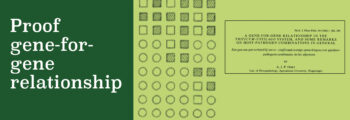

We aim to continuously provide an excellent teaching environment for students in phytopathology and to perform discovery research on plant pathogens, their hosts and interactions at all integration levels, thereby contributing to sustainable disease control. We aim to further expand our team with strong internal and external interdisciplinary collaborations to contribute to sustainable plant disease management in various crops by fundamental and applicable discoveries. This ambition puts responsibility on our shoulders. A responsibility that complies with the National Agenda settings for R&D, with a focus on circular agro-food systems, as well as with international forward strategies addressing human population expansion and food scarcity, such as the United Nations sustainable development goals, addressing amongst others the end of poverty and hunger. Clearly, this ambition can only be reached by strong alliances with other groups in and outside WUR. Therefore, we focus our strategy for the coming five to ten years on in-depth discovery research and a broad knowledge base thereby aiming at application.

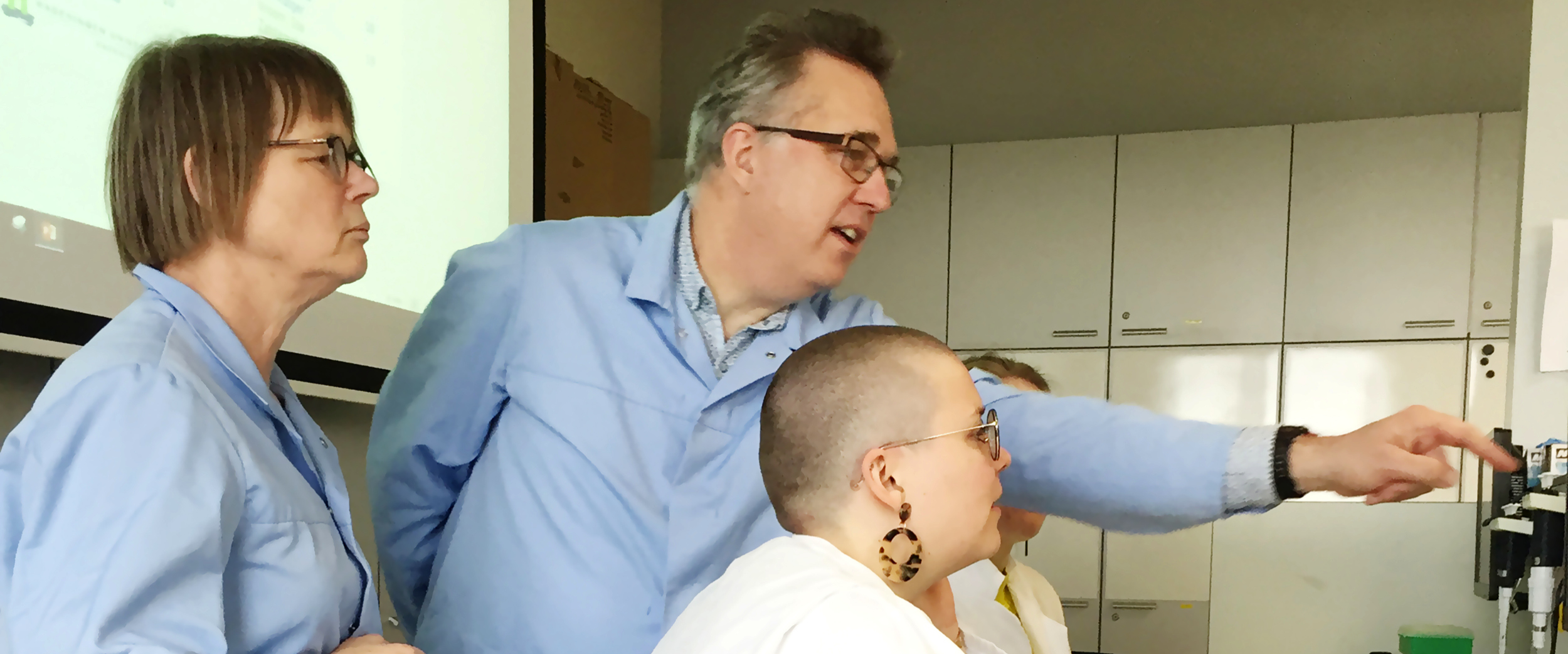

First of all, we are teachers. Devoted teachers. All of us are thrilled by working with bachelor, master and graduate students. We consider it a true privilege to gain and transfer knowledge to young people and to support them in preparing themselves for society. We contribute to 18 courses and coordinate six of these, apart from the BSc and MSc theses and internships.
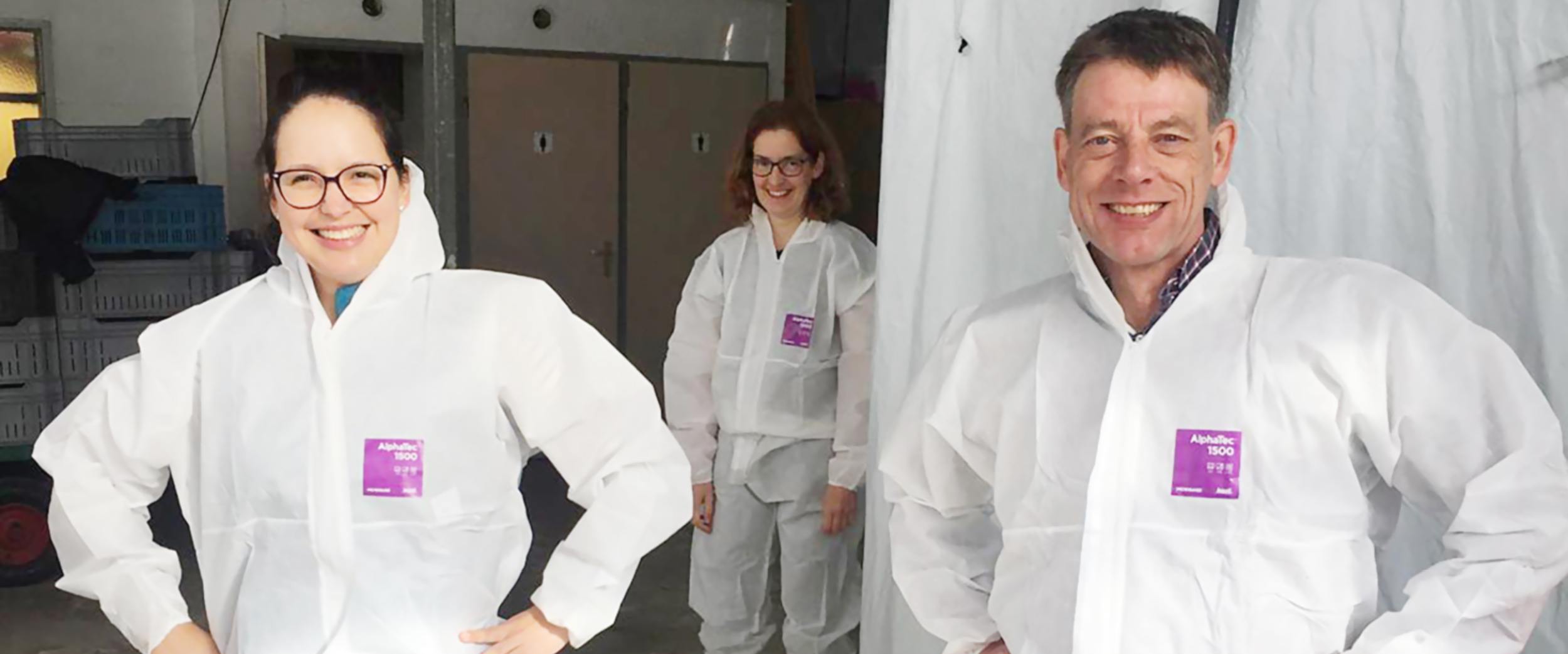

Next to being teachers, we are scientists with a drive for plant pathology. Together with our students we have developed into a recognized team of experts who contributed to several major breakthroughs in various areas of plant pathology.
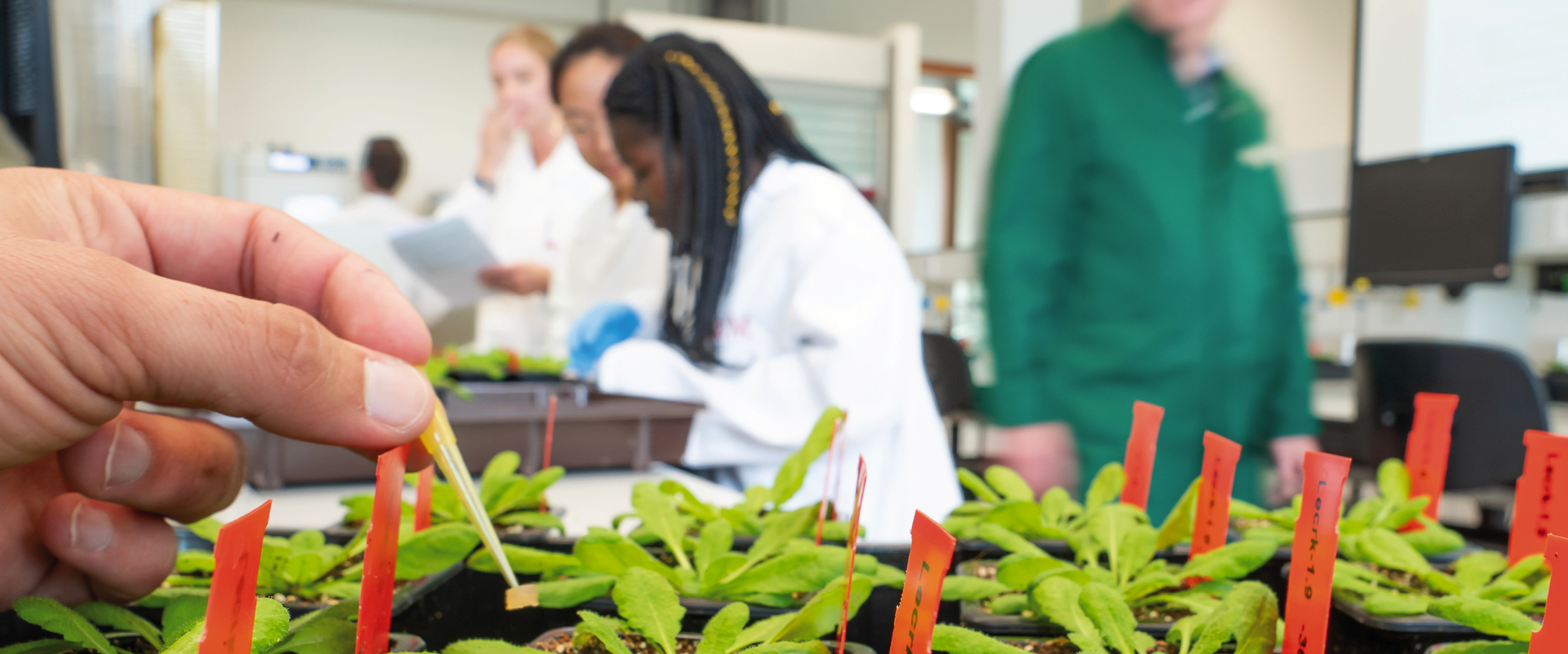

Our department has a Management Team (MT) representing the various tasks we have as a department . We rotate periodically to ensure a broad-based and participatory decision-making process. We have weekly meetings to address all aspects of running the Laboratory of Phytopathology, including teaching obligations and teaching load, as well as the financial management. We have implemented a transparent system where acquiring and spending budget is an efficient team effort and shared responsibility.
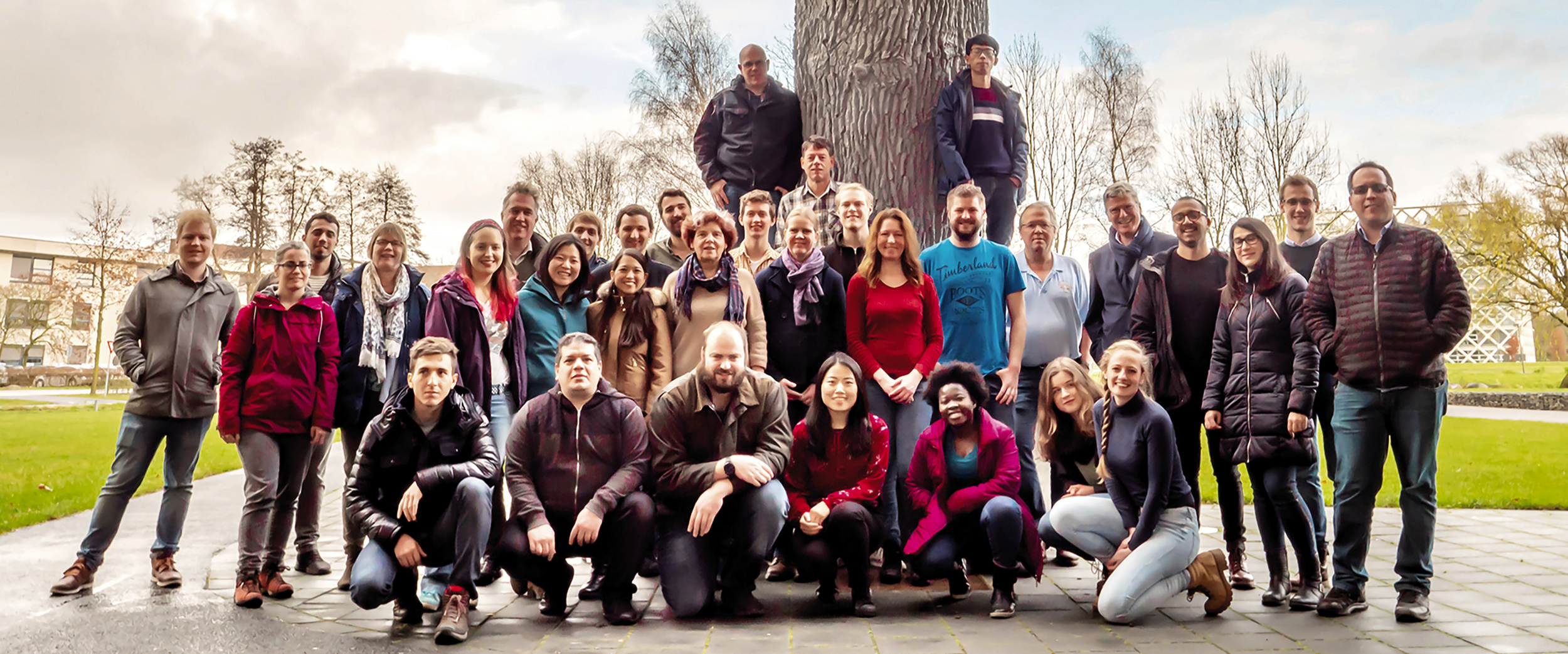

At the Laboratory of Phytopathology, team building is a continuum. We promote personal development in a respectful, safe and trustworthy environment. Our plans for the future are visionary and fluid, focusing on the coming five to ten years. This enables us to broaden our expertise and to nurture a growing and highly interactive and collaborative team.


1906

Founder of the Institute of Phytopathology. Phytopathology in Wageningen has a long history that goes back to 1906, the year that the Institute of Phytopathology
Read more1918

Founder of Laboratory of Mycology and Potato reseach. Discovered that leaf roll disease in potato was caused by a virus. Quanjer can be considered one
Read more1949

Chair from 1949-1969. Meer informatie: http://link.springer.com/content/pdf/10.1007%2FBF02137186.pdf
Read more1969

Chair of the section Physiological phytopathology 1969-1989. Focused on the mode of action of fungicides and mechanisms underlying reduced fungicide sensitivity in the target organisms.
Read more1989

Chair 1989-1991. An epediomology pioneer, considered a giant of the field. Over time, two major research lines emerged. One dealing with physiological aspects of plant
Read more1989

In 1989, Prof. Pierre de Wit was appointed as chair of the Laboratory of Phytopathology. At that time molecular phytopathology was rapidly emerging as a
Read more1991
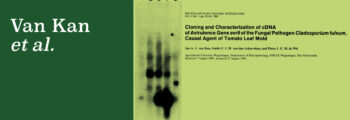
Cloning of the Cladosporium fulvum effector Avr9, the first effector gene ever cloned from a plant pathogenic fungus.
Read more1994
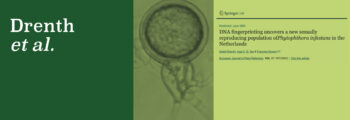
DNA fingerprinting uncovers a new sexually reproducing population of Phytophthora infestans in the Netherlands. Until the early nineteen eighties the Phytophthora infestans population in Europe
Read more1994
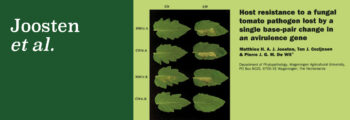
Avr4 Nature: Avr4 is the second C. fulvum effector that has been cloned (after Avr9). Cf-4 resistance is disrupted by a single point mutation in
Read more1996

Current Genetics – Discovery of the mating system of Zymoseptoria tritici, which causes Septoria tritici blotch in wheat and that enabled genetic studies, including the
Read more1998

Functional characterization of the polygalacturonase gene Bcpg1, the first Botrytis cinerea gene with demonstrated role in virulence.
Read more1999

Intranuclear gene silencing in Phytophthora infestans. The discovery that introduction of sense or anti-sense DNA sequences can lead to transcriptional silencing of the target gene
Read more2005
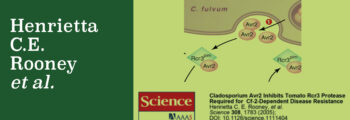
Proof of guarding hypothesis. Avr2 is a protease inhibitor that binds to tomato protease Rcr3. The Avr2/Rcr3 complex is recognized by Cf2 and Cf2 activates
Read more2007
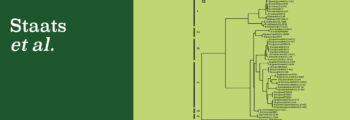
Phylogeny of the fungal genus Botrytis, the three genes used in this study have served as the standard gene set for all subsequent phylogenetic analyses
Read more2010
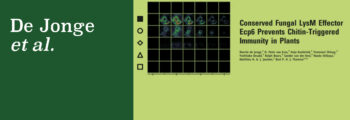
Published in Science. Ecp6 has been isolated from a 2D gel and the amino acid sequence could be determined upward of the N-terminus. This Ecp6
Read more2010
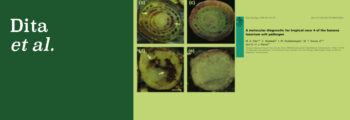
Plant Pathology – Development of the first molecular diagnostic kit for Tropical Race 4 causing Fusarium wilt of banana that threatens global banana production.
Read more2011
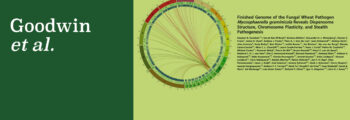
PLOS Genetics – Delivery of one of the first high quality gapless fungal genome sequences (Zymoseptoria tritici).
Read more2013
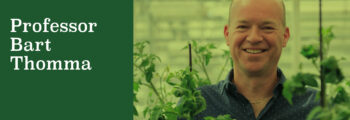
Staff member since 2005 and leader of the very successful Verticillium research group, appointed as the chair of the Laboratory of Phytopathology from 2013 till
Read more2013
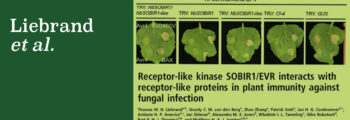
Published in PNAS. The RLK SOBIR1 interacts with RLPs (lack cytoplasmic kinase domain) and provides the kinase domain which makes the RLPs signalling competent.
Read more2014
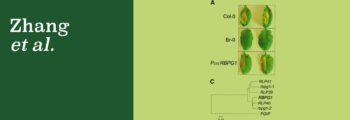
Cloning and characterization of an Arabidopsis Leucine-Rich Receptor that recognizes fungal endopolygalacturonases (serving as MAMPs) and causes subsequent cell death in a Atsobir1-dependent manner.
Read more2014

Actin dynamics in Phytophthora infestans; rapidly reorganizing cables and immobile-long-lived plaques. The actin cytoskeleton is a dynamic intracellular framework that is essential for proper functioning
Read more2016
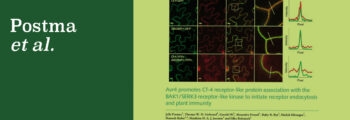
The RLP/SOBIR1 complex interacts with BAK1, just like RLKs, FLS2 and EFR. This interaction activates downstream signalling, probably caused by trans-phosphorylation of the kinase domains.
Read more2017
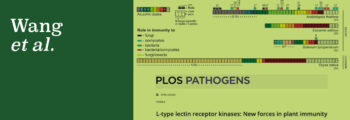
L-type lectin receptor kinases; new forces in plant immunity. These receptor-like kinases coined as LecRKs are plant-specific transmembrane proteins with an extracellular legume type lectin
Read more2018
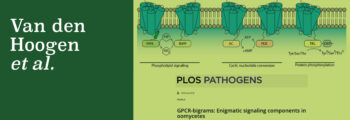
GPCR-bigrams: Enigmatic signaling components in oomycetes. Oomycetes possess many proteins with peculiar domain compositions and often these proteins are unique for oomycetes. Oomycete-specific proteins are
Read more2018

Nature Genetics – Cloning the first avirulence effector AvrStb6 in Zymoseptoria tritici and discovery of the Exclusive Paternal Parenthood mechanism which maintains avirulence effectors in
Read more2018

Chair 2018-present. Gert Kema entered the department as special professor of tropical phytopathology. Before focusing on perennial crops, such as banana, he worked for many
Read more2020

Genome comparison of 16 Botrytis species (the generalist B. cinerea and 15 host-specialized species) did not identify genes involved in host specificity, but revealed a
Read more

At Phytopathology we provide an excellent breeding ground for students. “Visuals” simplify reality. Here it shows how we are organized and where we wish to expand our expertise. Although we are in “boxes”, we typically think out-of-the-box and have manifold internal and external collaborations.


At Phytopathology we work hard but we also have time to relax and enjoy fun times together. Before the Covid-19 pandemic, we used to have Friday afternoon drinks, lab outings and other fun activities such as BBQ’s and birthday celebrations.
Nowadays, we try to keep the social interaction ongoing by organizing online get-togethers that include pub quizzes, social hangouts and virtual celebrations to commemorate special occasions. Despite the social distancing and remote working, we try to engage our staff and students to continuously interact in a virtual and safe environment.







